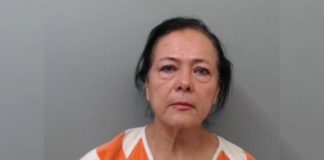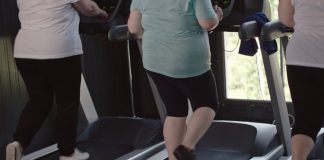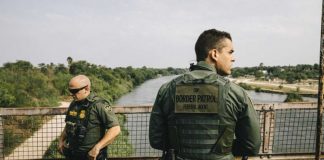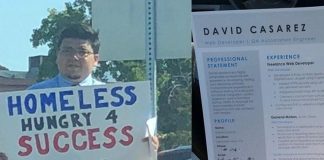Mad Max, Lethal Weapon, Braveheart
Advertisements:
$425 Million
"Life is life, and one has experiences that are painful and some that are very pleasant, and one has reward and sacrifice and more reward and disappointment and joy and happiness, and it's always going to be the same."
It has been said of Mel Gibson that he is a character actor trapped in a leading man's body. Mel had just the right combination of boyishness and rugged good looks to make him a major action star through the 1980s and 1990s, but there was always something a little more to him than you would find in a typical action hero. He was an actor who wasn't afraid to be vulnerable, to portray characters struggling with mental illness, insecurity or depression, and it's hard to imagine anyone else but Mel Gibson as the wounded, borderline-deranged Martin Riggs, or bringing such a haunting, melancholy presence as Mad Max Rockatansky.
"I'll always continue to work. I've never much depended on anyone but myself, as far as that goes."
New York Born, Australia Raised
Mel Gibson has long been known for his Australian background, but he was actually born in New York on January 3, 1956 to writer Hutton Gibson and mother Anne Patricia. The sixth of eleven children, Mel found his way to Australia at age twelve when his father won a $145,000 lawsuit against the New York Central Railroad for a work-related injury, and moved the family to West Pymble in Sydney.
While in Sydney, Mel picked up a liking for the performing arts, enrolling at the National Institute of Dramatic Art. Undergoing classical training in the British-theater tradition, Gibson featured in the lead role of a number of productions, including A Midsummer Night's Dream and Romeo and Juliet. After graduating in 1977, Gibson almost immediately became a movie star. Though he only earned $400 for his screen debut, a bit part in Summer City (1977), he was cast as the titular Mad Max (1979) soon after, thanks in part to a black eye he had sustained in a recent fight, which director George Miller felt gave Mel just the right tough guy appeal to play the part. The first film in the Mad Max series would be a relatively low-budget affair, with Mel earning $15,000, but the movie became an instant international hit, propelling Gibson to stardom.
"It's all happening too fast. I've got to put the brakes on or I'll smack into something."
In the early 1980s, Gibson continued to work in the theater, featuring with Geoffrey Rush in Waiting for Godot, and playing Biff Loman in Death of a Salesman. He worked on a number of Australian TV shows, including Cop Shop (1977-84) and The Sullivans (1976-83).) His next major role would be Gallipoli (1981), earning Mel the Australian Film Institute's award for best actor, and he soon followed Mad Max up with The Road Warrior (1982), which was, at the time, the most expensive Australian film ever produced.
Everything about The Road Warrior was bigger. The car chases now featured dozens of customized cars, trucks, bikes and dune buggies. An entire post-apocalyptic village was built from wrecked cars, tires and schoolbuses. And it was an even bigger success, in Australia and worldwide, than its predecessor. Mad Max had made Mel Gibson famous, The Road Warrior made him one of the biggest stars of the decade, and gave the young actor the freedom to pick and choose his work, even turning down the role of James Bond after being suggested by none other than Sean Connery. Two years later Mel Gibson would be bringing in superstar-sized paychecks, earning his first seven figures on the third Mad Max film, Beyond Thunderdome (1984), and that same year he would make his US debut in The River (1984), as a struggling Tennessee farmer managing the catastrophe of a coming flood.
Gibson took a two-year hiatus in the mid-80s, but came back with a bang, playing Martin Riggs in Lethal Weapon (1987), his first American role to stand side by side with Mad Max as an iconic cultural figure. A brooding, tragic figure, pulled back from the edge of self-destruction by partner Roger Murtaugh, Martin Riggs showed a new side of Mel Gibson, proving that he was truly in his element not when playing more typical handsome heroes, but complex, emotionally troubled characters.
Gibson's Hollywood Superstar days would follow with Tequila Sunrise (1988), Air America (1990), Bird on a Wire (1990), Hamlet (1990), Forever Young (1992), Maverick (1994) and three sequels to Lethal Weapon, with Lethal Weapon 2 (1989) being cited as a personal favorite by Mel, co-star Danny Glover, and director Richard Donner.
Around this time, Mel Gibson would first begin to pursue directing, making his behind-the-camera debut with The Man Without a Face (1993). The movie earned some commendation, but it was Braveheart (1995) which would truly establish Mel's unique voice as a director, and prove that he was the real deal, and not merely an actor taking on vanity projects. Braveheart was a decade-defining action-adventure film, with shockingly realistic battle scenes and a storytelling approach that was one part historical drama and one part Robin Hood mythmaking.
Crisis and Comeback
"I had really good highs but some very low lows. I found out recently I'm manic depressive."
In the mid-2000s, Mel Gibson directed The Passion of the Christ (2004) and Apocalypto (2006), both bold, daring period-pieces shot in languages appropriate to their time and place. While both films seemed unmarketable, they wound up becoming major hits, further establishing Gibson as one of the most interesting directors of his time. Unfortunately, an embarrassing and highly-publicized DUI incident would soon derail the director's plans.
An extensive Hollywood blacklisting would threaten to end Mel Gibson's career, but he would take this time to address his lifelong struggles with alcohol and bipolar disorder. He would make his Hollywood comeback with The Beaver (2011), directed by friend Jodie Foster, starring as a man dealing with intense depression by speaking to himself with a beaver hand-puppet. The dark, strange movie failed to find an audience in theaters, but served as a reminder of Gibson's humanizing charisma, turning a bizarre premise into something real and relatable.
Before long, Gibson was back to making action films, starring in Get the Gringo (2012) and The Expendables 3 (2014). He made his directorial comeback in the mid-2010s, helming Hacksaw Ridge (2016), following a pacifist enlisted in World War II.
For a time it seemed that Mel Gibson's career had come to a premature end, but through a long process of healing, he was able to make a comeback not only in film, but in his personal life, as well, remaining one of the most interesting, and most human, actors and directors working today.
"It's a wise man who understands that every day is a new beginning, because boy, how many mistakes do you make in a day? I don't know about you, but I make plenty."
->





